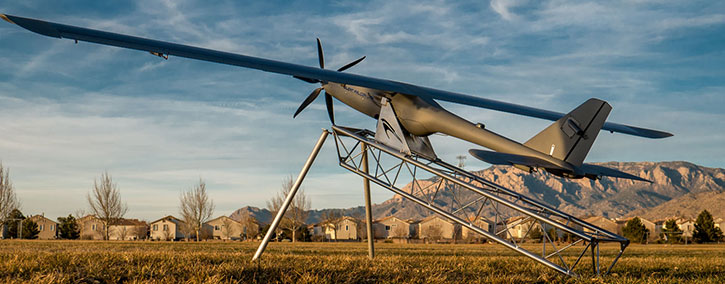
Laser beams are used for numerous applications and when associated with unmanned aerial systems are most likely used as drone killers. But under a new research supported by the US Defense Advanced Programs Research Agency (DARPA), lasers are used as a consistent power source for drones. DARPA plans to demonstrate this capability under the Stand-off Ubiquitous Power/Energy Replenishment – Power Beaming Demo (SUPER PBD), which will extend the mission of a Silent Falcon solar electric UAS using laser power.

Designed for long endurance, long-range missions Silent Falcon uses solar arrays to charge its batteries and power its motor, avionics, and payloads. The test will demonstrate the feasibility of recharging the batteries on board, in flight, by using a laser light source, allowing for indefinitely long flight times by using concatenated “Fly” and “Fly & Charge” cycles removing the need to land to refuel.

According to a drawing published by Silent Falcon, the light energy transmitted by the laser will be picked by photovoltaic receiving arrays added to the vertical tail. This configuration will enable the use of ground-based lasers with an adequate efficiency that could not be provided by the wing mounted arrays.
“We believe that this project will demonstrate that remote electric refueling of DoD systems via high energy laser power beaming to extend mission operation time in contested and remote environments can be delivered to the warfighter in the near future”, said the project’s DARPA lead, Joseph A. Abate PhD.
[wlm_nonmember]
[/wlm_nonmember]
[wlm_ismember]Designed for short-range, low-altitude, long-endurance missions, the 14.5 kg drone can operate at 15 km range or 100 km, using a mesh network. It can operate for up to five hours using fully charged batteries and solar charging delivered by the 14.4 ft wing coated with solar arrays to deliver additional energy during the flight. On a mission, it loiters at a speed of 27 knots, at a ceiling of 20,000 ft.
For the POWER PBD demonstration, the Silent Falcon will use a wing embedded with lightweight, highly efficient thin-film solar arrays made especially for UAVs by SolAero Technologies and Ascent Solar. Optonicus provides the intelligent, adaptive fiber-array laser beam power transmitters that consistently and precisely projects the light energy from the source to the drone.
The concept of ‘power beaming’ is not new, but has not been fully tested with drones yet, primarily due to size and laser safety issues, limited to small drones and static tests in labs. To conduct the experiment with minimal modifications to the drone the test should involve an airborne laser, although, theoretically, it can also use a solar panel on the lower side of the wing to receive the laser energy.
[/wlm_ismember]
Similar tests conducted by PowerLight have demonstrated about 25 percent energy transfer efficiency by laser beams. PowerLight also offers its power transmission technology to power unmanned underwater vehicles (UUV) tethered by fiber optical cables.
[wlm_ismember]

[/wlm_ismember]




















